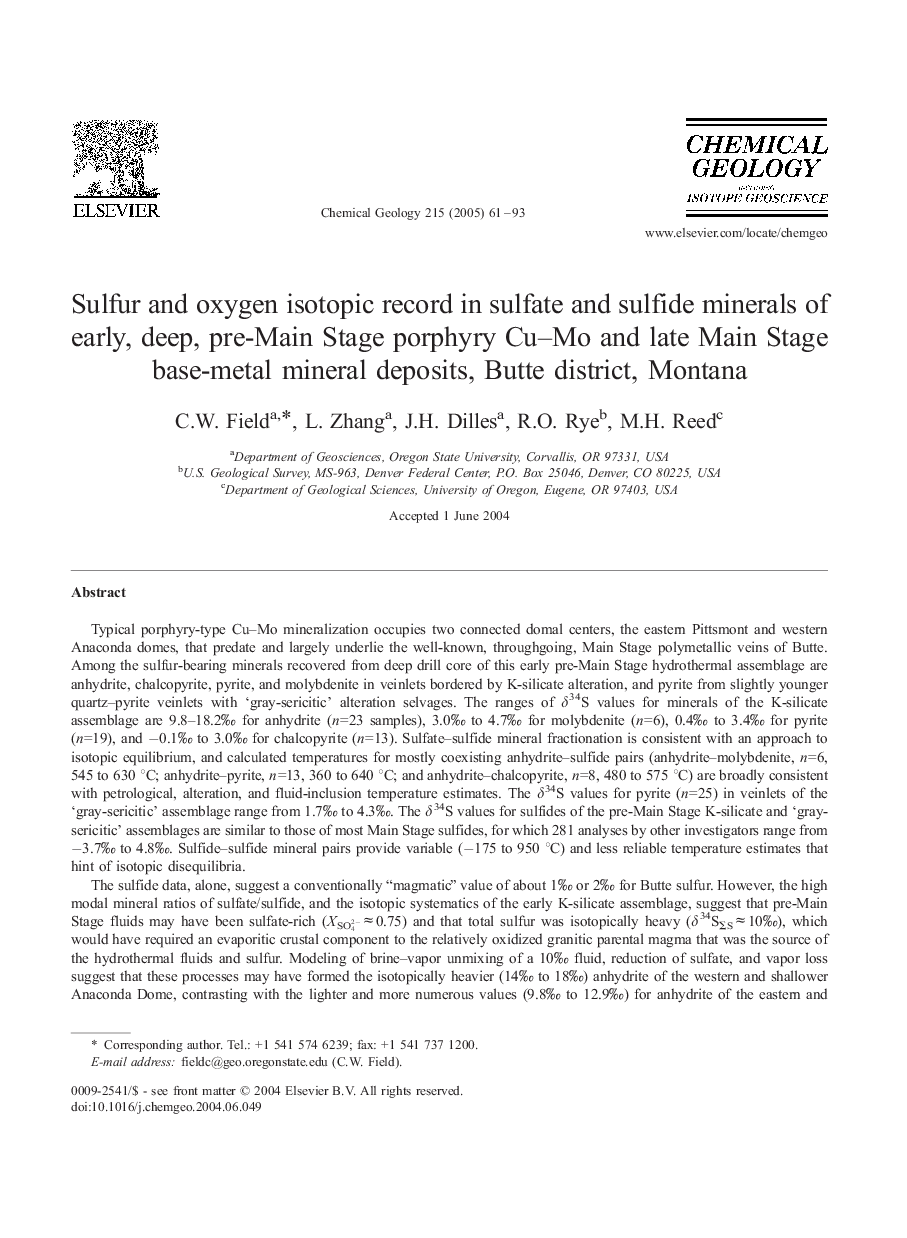| کد مقاله | کد نشریه | سال انتشار | مقاله انگلیسی | نسخه تمام متن |
|---|---|---|---|---|
| 9529209 | 1637793 | 2005 | 33 صفحه PDF | دانلود رایگان |
عنوان انگلیسی مقاله ISI
Sulfur and oxygen isotopic record in sulfate and sulfide minerals of early, deep, pre-Main Stage porphyry Cu-Mo and late Main Stage base-metal mineral deposits, Butte district, Montana
دانلود مقاله + سفارش ترجمه
دانلود مقاله ISI انگلیسی
رایگان برای ایرانیان
کلمات کلیدی
موضوعات مرتبط
مهندسی و علوم پایه
علوم زمین و سیارات
ژئوشیمی و پترولوژی
پیش نمایش صفحه اول مقاله

چکیده انگلیسی
The sulfide data, alone, suggest a conventionally “magmatic” value of about 1â° or 2â° for Butte sulfur. However, the high modal mineral ratios of sulfate/sulfide, and the isotopic systematics of the early K-silicate assemblage, suggest that pre-Main Stage fluids may have been sulfate-rich (XSO42ââ0.75) and that total sulfur was isotopically heavy (δ34SΣSâ10â°), which would have required an evaporitic crustal component to the relatively oxidized granitic parental magma that was the source of the hydrothermal fluids and sulfur. Modeling of brine-vapor unmixing of a 10â° fluid, reduction of sulfate, and vapor loss suggest that these processes may have formed the isotopically heavier (14â° to 18â°) anhydrite of the western and shallower Anaconda Dome, contrasting with the lighter and more numerous values (9.8â° to 12.9â°) for anhydrite of the eastern and deeper Pittsmont Dome. Such a process might also have been able to produce the sulfide isotopic compositions of the younger 'gray-sericitic' and Main Stage zones, but the limited data for sulfates permit δ34SΣS compositions of either 2â° or 10â° for these later fluids. Oxygen isotopic data for late Main Stage barite (â0.3â° to 12.4â°, n=4 samples) confirm variable meteoric water contributions to these fluids, and the data support either the absence of, or limited, sulfate-sulfide isotopic equilibrium in these samples. The δ34S values for sulfate-sulfur of barite are markedly variable (4.4â° to 27.3â°), and the unusual 34S depletion indicates sulfur formed by oxidation of H2S.
ناشر
Database: Elsevier - ScienceDirect (ساینس دایرکت)
Journal: Chemical Geology - Volume 215, Issues 1â4, 15 February 2005, Pages 61-93
Journal: Chemical Geology - Volume 215, Issues 1â4, 15 February 2005, Pages 61-93
نویسندگان
C.W. Field, L. Zhang, J.H. Dilles, R.O. Rye, M.H. Reed,